"It was an anything goes society," said our guide, Rachid,…
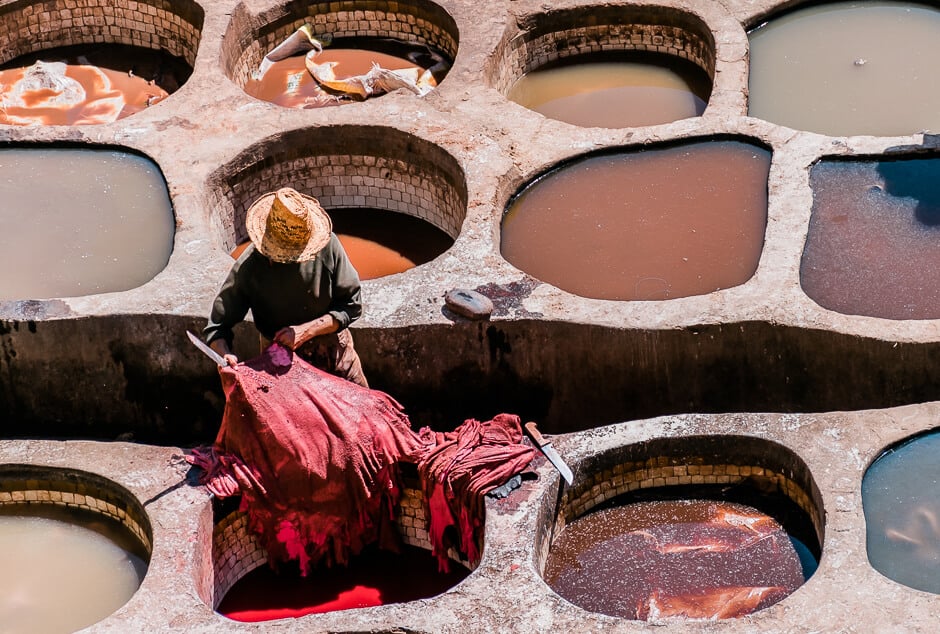
12 Things to Do in Fes, Morocco You Can’t Miss
When it comes to things to do in Fes, it’s an understatement to say that there are plenty of options.
Located in northwestern Morocco, Fes is a vibrant city, known for its rich culture and history. It’s home to the oldest university in the world and the best preserved Medina.
The colourful souks in the Medina are both chaotic and delightful. The intricate architecture, the spices, and even the ancient, smelly tannery will leave a mark in your memories.
Is Fes worth visiting? Absolutely. While some prefer the more upscale ambiance in Marrakech, I find Fes to be more authentic and less touristy. And yes, perhaps a little more gritty.
Read on for my recommendations on what to do in Fes, as well as where to eat and stay.
Top things to do in Fes
Here’s a list of the must-visit attractions in Fes.
Marvel at Bab Boujloud, the grand gate to the Fes Medina
One of Fes’ must-sees is its Medina, Fes el Bali. “Medina” is an Arabic term that refers to the oldest part of a city.
Bab Boujloud is the gate that leads to Fes el-Bali. The current gate was built in 1913 by the French. The original one is just off to the left.
You pass right through Bab Boujloud to enter the Medina. Take a moment to look at the beautifully decorated arch. It was made using polychrome, traditional Moroccan-style tiles in shades of blue and green.
It’s best to visit during the day for a good look at the tile work. If you’re there at night, you’ll see the arch beautifully illuminated in front of the Medina, which is also a magnificent sight!
The gate is about a mile from Nejjarine Square, near the western corner of the Medina. There’s a stop right outside the gate if you’re on the line 16 bus.
Explore the Fes Medina, one of the Most Important Things to Do in Fes
You might think of the Fes Medina as the ultimate escape room. It’s a labyrinth with over 9000 alleyways. Some of them are barely two feet wide.
As you wander, you’ll come across the souk with crafts from carpets to pottery and almost anything else you can imagine. In one moment, you’ll find the most delicious, fresh orange juice. Then, you turn a corner and see a goat’s head at a local butcher shop. No wonder there are always cats roaming about.
And you may have to dodge a donkey laden with goods. Just FYI, donkeys have the right of way – – it’s the only way to transport goods in the Medina.
This is authentic Fes. It’s one of the oldest continuously inhabited medieval cities in the world. And a UNESCO World Heritage site.
Quite simply, the Medina one of the most fascinating things to see in Fes.
Needless to say, it’s very easy to get lost in maze of the Medina. Or to miss the really good stuff.
Getting lost can be fun, but in this case, I strongly recommend a guided walking tour. This way, you’ll be sure to see the highlights and avoid losing time trying to find your way out. A guide can even help you with the art of bargaining (because you must!).
The other advantage of having a guide is that you’re less likely to be hassled by people who offer to help you find places – – for a fee, of course.
Bliss tip: Avoid visiting the Medina on a Friday – Friday is a religious day for many Muslims in Morocco, and you’ll find that many shops may be closed.
Try the “sensory” experience at the Chouara Tannery
If you’re looking for next-level authenticity in Fes, this tannery fits the bill.
The Chouara Tannery is the largest and oldest tannery in the city. It’s truly the most iconic, and stinky, place to visit in Fes.
Here, the techniques for making leather out of hides haven’t changed since the 11th century.
It’s a manual process. To preserve the hides, they’re soaked in a concoction of cow’s urine, pigeon poop and quicklime. The dyes are all natural.
The overall effect is colossally stinky. You’ll be offered a sprig of mint to hold under your nose – – use it!
You have to walk through one of the many leather shops to get to the viewing platform for the tannery. On my tour, we passed through shop #10 (follow your nose to find it).
There’s no charge for entry, but you’ll be approached by touts offering to show you the best view for a fee. And of course, the shops want to sell leather goods. I bought a purse for about $30 that I’ve been using for years.
Once again, I think that a tour is the easiest way to visit the tannery and the Medina.
Take in the Beauty of Traditional Moroccan Art and Architecture at Bou Inania Madrasa
Located in the center of the Fes Medina, Bou Inania Madrasa was built around 1350. A madrasa is an Islamic learning centre. It’s the only one in Morocco that also functioned as a full-on congregational mosque. It’s also one of very few religious buildings that non-Muslim visitors are permitted to enter, but note that there are some restrictions on photography.
Bou Inania Madrasa reflects the architectural and artistic achievements of Morocco during the 14th century. Make sure you look at the intricate details – namely, the tile work, carved cedar doors, and traditional Islamic art.
There’s a small entry fee. Although you can only go into the courtyard, there’s plenty to see!
Learn about local tradition, religion, and history at Al Atterine Madrasa
Another one of the remarkable historical places to visit in Fes is Al Atterine Madrasa. It was built as a religious school during the rule of the Marinid dynasty in the 14th century. The madrasa was named after a nearby spice market (“atterine” translates to “spice market”) that the scholars frequented.
Visitors can go inside and explore its exquisite interior. It’s adorned with intricate calligraphy, including verses from the Quran and other religious scripts. There’s also a stunning courtyard and fountain. Once again, make sure you have a good look at the colourful Moroccan tile work.
The madrasa is in the central part of the Medina, near Kairaouine Mosque. There’s a small entry fee (about MAD 20). It’s open from 8:30 until 18:00 every day, except for Friday.
Take a peek at the oldest university in the world
The university of Kairaouine (also spelled as “Al-Qarawiyin” or “Al Quaraouiyine”) is one of Fes’ must-sees because of its incredible architecture and historical significance.
The university was founded in 859 AD and it’s still fully functional to this day. On top of that, it was founded by a woman, Fatima al-Fihri!
Originally, Kairaouine University was established as a mosque that later became a renowned Islamic academic institution.
Unfortunately, non-Muslims aren’t permitted to enter the buildings. However, the main gates are normally open, as well as a few other entrances, so you can sneak a peek from outside. It’s located in the Medina.
Admire the entrance to the Royal Palace
The Royal Palace, also known as Dar el Makhzen, was built during the reign of Sultan Moulay Hassan I in the 19th century. The building is renowned for its style which is often described as traditionally Moorish and Islamic.
Located in what’s commonly referred to as “New Fes” (or Fes el-Jdid), the Royal Palace is an important symbol of the Moroccan monarchy. In fact, the current royal family still lives in the palace, so visitors can’t go inside. The main entrance of the palace is guarded by the royal guard!
It’s also worth visiting to see the majestic gates to the palace, the incredible architecture of the building, and the beautiful gardens in front of the gate.
You can get a view of the palace from Mellah, the Jewish Quarter adjacent to the palace.
Enjoy the view of the old city from Borj Sud Viewpoint
Borj Sud is an historic fort that was built during the 16th century. It’s situated on the hills overlooking Fes el-Bali, across from its sister fort Borj Nord.
The forts were built as strategic lookouts over the city. They provide unparalleled views of the Medina below. The Borj Sud Viewpoint is worth visiting to see the city from a different perspective.
Enjoy a short walk up the hill from the Medina to Borj Sud Viewpoint. It’s not a long or difficult hike, but it’d be best to wear comfortable shoes!
So, if you’re wondering what to do in Fes for a break from the city, a visit to Borj Sud is a great option.
Visit the ruins of the Marinid Tombs
The Marinid Tombs, set on the northern hills overlooking Fes el-Bali, lie opposite the Borj Sud Viewpoint.
The Marinids conquered Morocco in the mid-13th century, and the necropolis is believed to have been built as the royal burial site for the Marinid monarchy – however, no one really knows exactly who was buried there.
Today, the tombs are in ruins but they still loom large and are quite incredible to see
Visitors can visit the Marinid Tombs at no charge, and the best way to get there is to walk. It’s not too far and you can get there easily from the Fes el-Bali or the Borj Nord Museum. If you want to be able to really enjoy the view of Fes below, visit at sunset – the panorama of Fes el-Bali and the sound of the call to prayer makes for an incredible experience.
Tip: Don’t stay here after sundown, especially if you’re traveling solo. Locals warn that there have been a number of muggings here.
Take a walk in the Jewish Quarter, “Mellah”
In Fes, the Mellah, or Jewish Quarter is located near the Royal Palace in the area known as Fes el-Jdid. Fes was home to some of the earliest Jewish people in the country, and around the 10th and 11th centuries, it was one of the centres of a Jewish intellectual and cultural renaissance.
The Jewish population there has dwindled, but visitors will still find many significant monuments and landmarks that showcase the area’s Jewish history.
Make sure you visit Ibn Danan Synagogue, the Jewish Cemetery, and the Museum of Moroccan Judaism. The gold souk and antique furniture stores are also worth a stop.
Learn about Moroccan craftsmanship at Nejjarine Museum of Wooden Arts and Crafts
If you’re wondering what to see in Fes that’ll satisfy your curiosity about Moroccan craftmanship, the Nejjarine Museum of Wooden Arts and Crafts is the place to go. The museum is home to an impressive collection of wooden tools and artifacts that show off Morocco’s rich history of woodwork.
You can see crafts from all over the country, but make sure you look out for the famous wooden boards. They were used by Quranic recitation students, and they’re patched with copper and have graduation certificates mounted on them.
The museum is in Fes el-Bali, within an exquisitely restored, 18th-century inn. Visitors can buy tickets at the door.
Enjoy a quiet break from the city at Jnan Sbil Gardens (Bou Jeloud)
No Fes guide would be complete without a visit to the Jnan Sbil Gardens. It’s located in between Fes el-Bali and Fes el-Jdid. The public gardens feature beautiful greenery and flowers, making it the ideal place to enjoy some respite from the bustling city.
The gardens are also referred to as “Bou Jeloud.” They’re home to a few historical landmarks – most notably, the Mausoleum of Moulay Idris II (a UNESCO World Heritage Site).
Where to Eat in Fes
Another one of the fun things to do in Fes is to enjoy the local fare. Known for its rich and diverse flavors, Moroccan cuisine is distinct and flavourful. Some of the fan favourites include tagine and pastilla. Fes also has a buzzing street food culture, where you simply have to try traditional foods.
Here are our top two recommendations for the best restaurants in Fes; one for everyday meals and another that’s ideal for special occasions.
Café Clock
Located in an old converted medieval house in the Medina, Café Clock is always a great choice for a meal, whether it’s breakfast, lunch, or dinner. They serve traditional food – with a few western-type items (especially for breakfast) at a reasonable price point.
Café Clock is all about sharing all aspects of Moroccan culture (including food, music, art, and more) with locals and visitors alike – they also offer traditional cooking classes and sometimes host events and cultural festivals.
Dar Roumana
Dar Roumana offers a unique fine-dining experience, serving Franco-Moroccan fusion cuisine with the utmost finesse. The restaurant is located within Fes el-Bali, nearby the Nejjarine Museum. Their dining areas include the courtyard and traditional salon. Be sure you make a reservation!
A few other top recommendations for places to eat in Fes include:
- Ruined Garden: A combination of sought-after traditional meals and creatively reimagined versions of traditional Moroccan food.
- Palais Amani: Enjoy a romantic, luxury dining experience in a traditional riad.
- L’Amandier at Palais Faraj: Gaze out at the city from the rooftop restaurant and enjoy its traditional (and sometimes unusual) meals.
Where to Stay in Fes
The best Fes hotels and guesthouses are riads. These are traditional Moroccan houses, usually with an interior garden or courtyard. They’re often intricately decorated and each one is unique.
Here are some of the top recommended areas to stay in Fes:
- Fes el-Bali: The Fes Medina is a great place to stay for first-time visitors.
- Fes el-Jdid: This area is considered the “new” part of the medina. It used to be the city’s Jewish quarter.
- Bab Bou Jeloud: Located just outside the Fes Medina, this neighborhood is where old meets new.
- As Seffarine: Known as the neighborhood of coppersmiths, As Seffarine is very affordable.
- Nouvelle Ville: Southwest of the Old Medina, Nouvelle Ville is a nightlife hotspot.
Let’s have a quick look at a few highly recommended accommodation options.
Karawan Riad
Located within Fes el-Bali, Karawan Riad is a luxury Fes hotel offering traditionally decorated rooms as well as a restaurant and hammam on site. Check prices and availability at Karawan Riad here.
Dar Seffarine
About 300 metres away from the entrance of the Medina, Dar Seffarine is an affordable (mid-range) accommodation option in Fes that boasts modern Moroccan decor and the utmost comfort. Check prices and availability at Dar Seffarine.
Here are a few other top options:
Day trips from Fes
Fes is ideally located to make day trips to these top Morocco destinations:
Visit Meknes, Volubilis, and Moulay Idriss
Enjoy a full-day trip to the ancient Roman ruins of Volubilis, the sacred town of Moulay Idriss, and the Imperial City of Meknes.
Visit the blue city of Chefchaouen
Explore the iconic “Blue City” of Chefchaouen and immerse yourself in the city known as the “blue pearl of Morocco.”
Book a day trip from Fes to Chefchaouen here.
FAQs about visiting Fes
Is it Fes or Fez?
Both “Fes” and “Fez” are accepted spellings of the city name. The former has French origins and the latter American origins. The authentic Arabic name, however, translates directly to “Fas”.
How can tourists get around in Fes?
The best, and most authentic, way to get around Fez is on foot. But for longer distances, you can use public transport – trains, buses, and taxis are quite efficient in the city. It’s also helpful to hire a guide to find your way around.
What is the best time to visit Fes?
The best time to visit Fes is during the shoulder seasons. It’s ideal from March until May or from September until November. Summer is very hot and quite busy (and more expensive). Winter is actually quite pleasant and rates are generally lower.
What languages do they speak Fes?
Arabic is the official and predominant language in Fes. Other languages spoken in the city include French and Berber, and English is becoming more common. I was able to get by in many instances with my basic Canadian French.
What is the currency in Fes?
The currency in Fes is the Dirham (MAD). Note that you can’t get Dirham outside of the country (and you can’t take any out either).
More Information:
To get there: I visited Fes as part of the “Sahara & Beyond” tour, a National Geographic Journey with G Adventures.
Tourism Information: Visit Morocco
Reading: Fodor’s Essential Morocco, A House in Fez: Building a Life in the Ancient Heart of Morocco
Pin it:
A Tour Down Hedonism Lane in Volubilis, Morocco

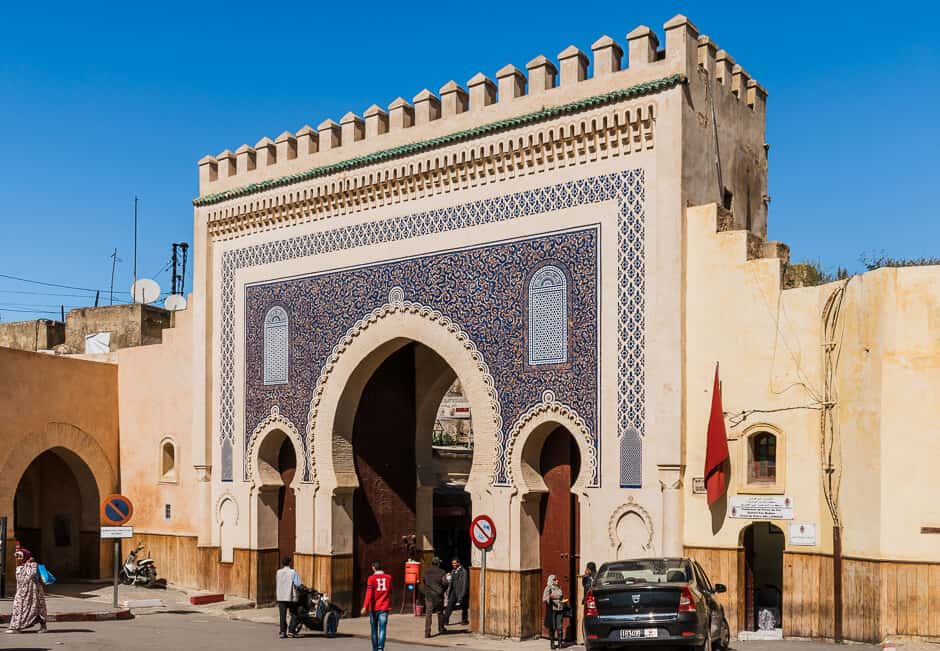
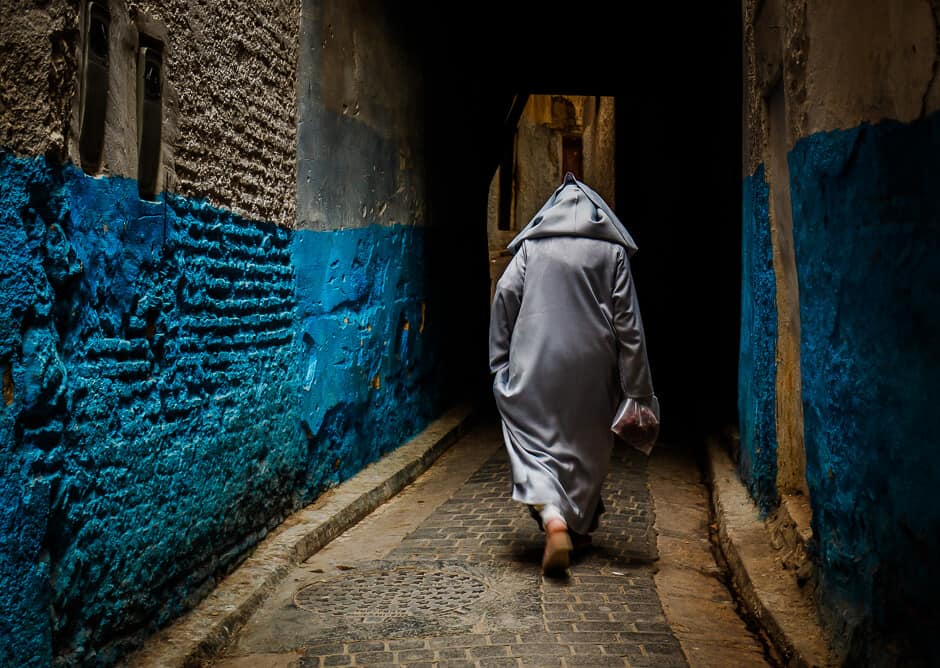
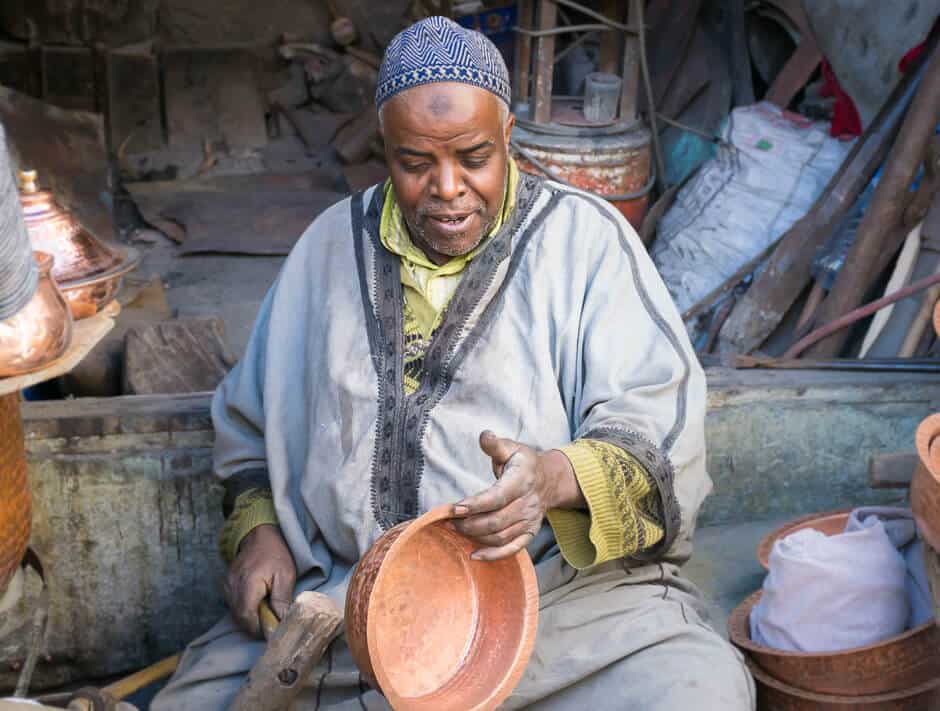
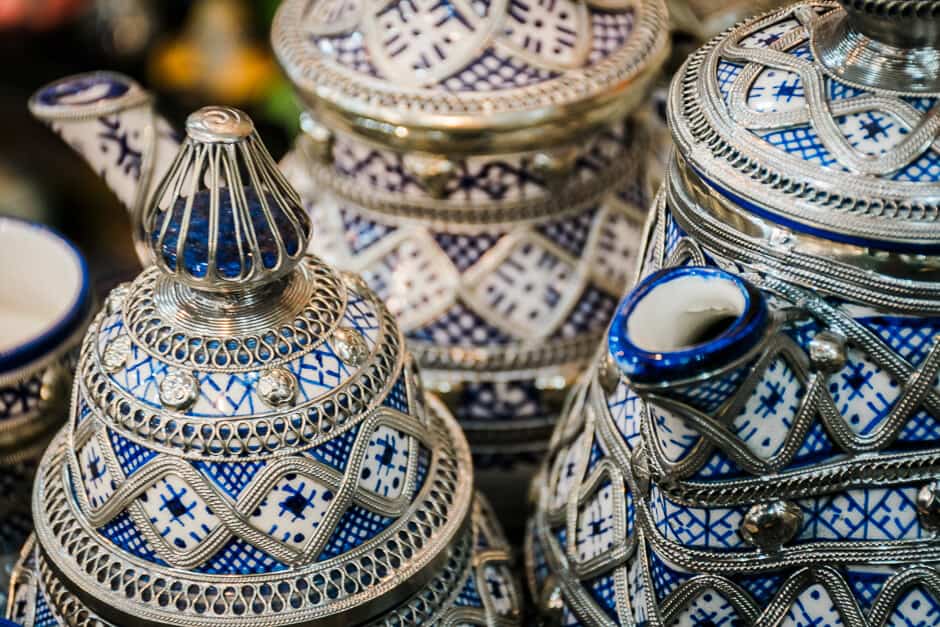
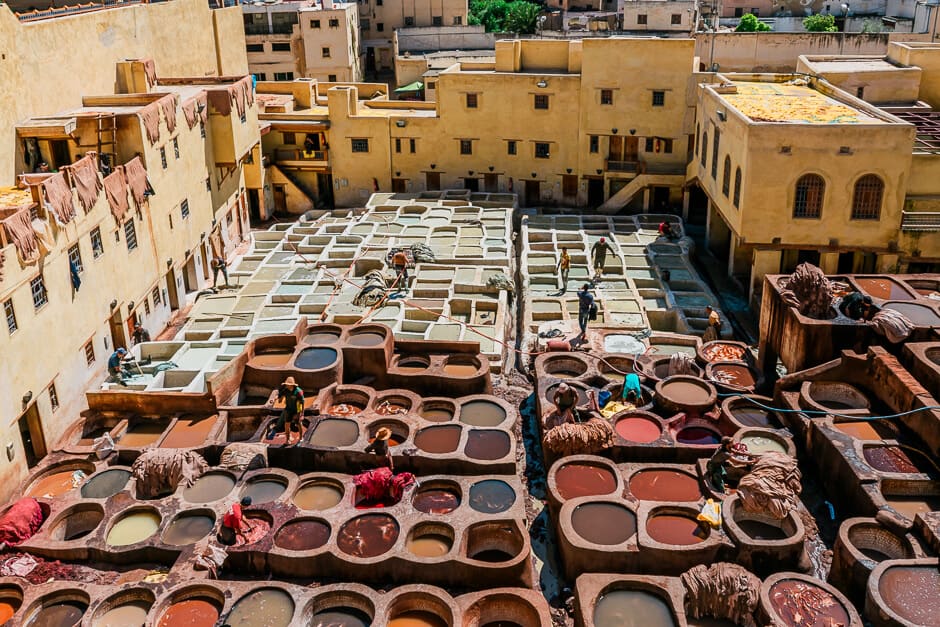
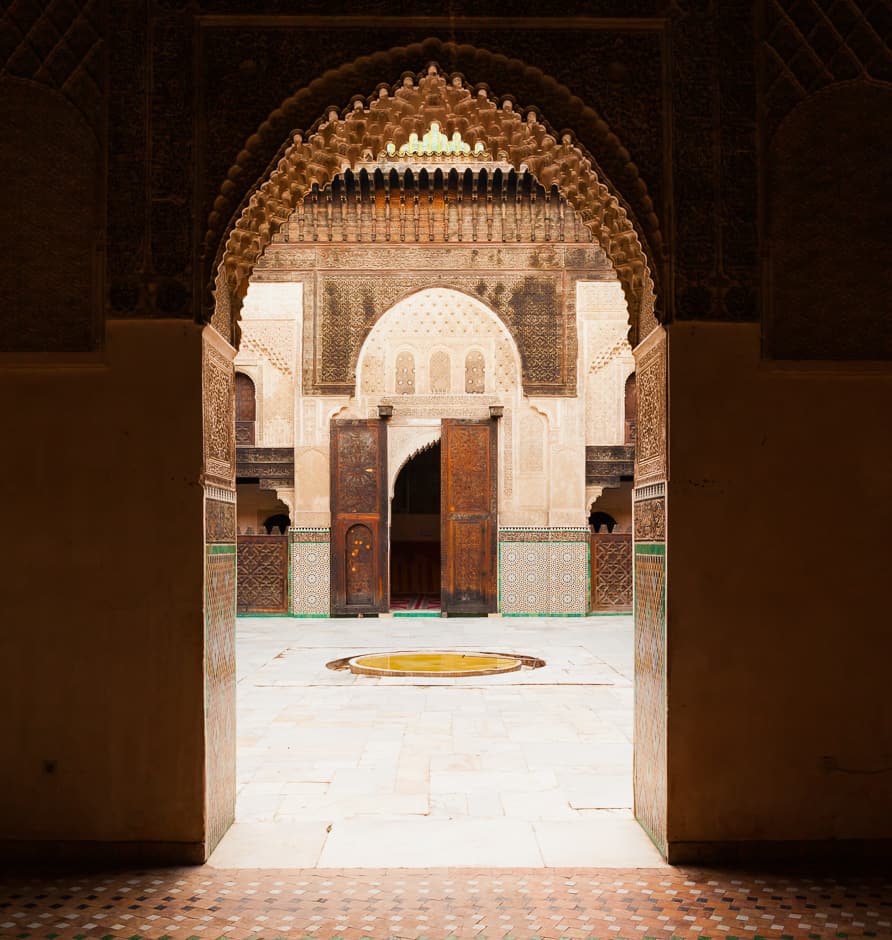
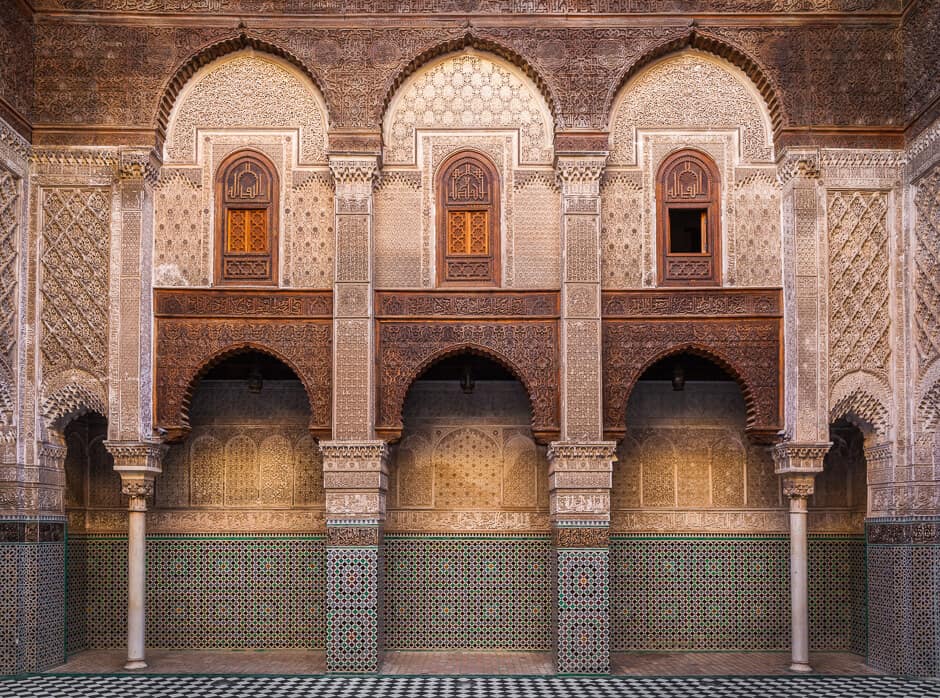
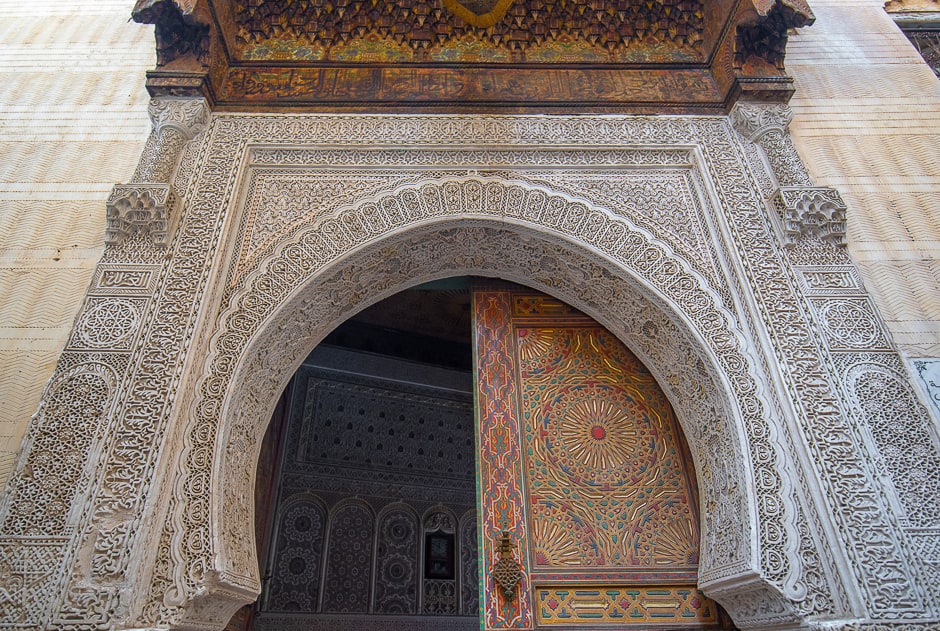
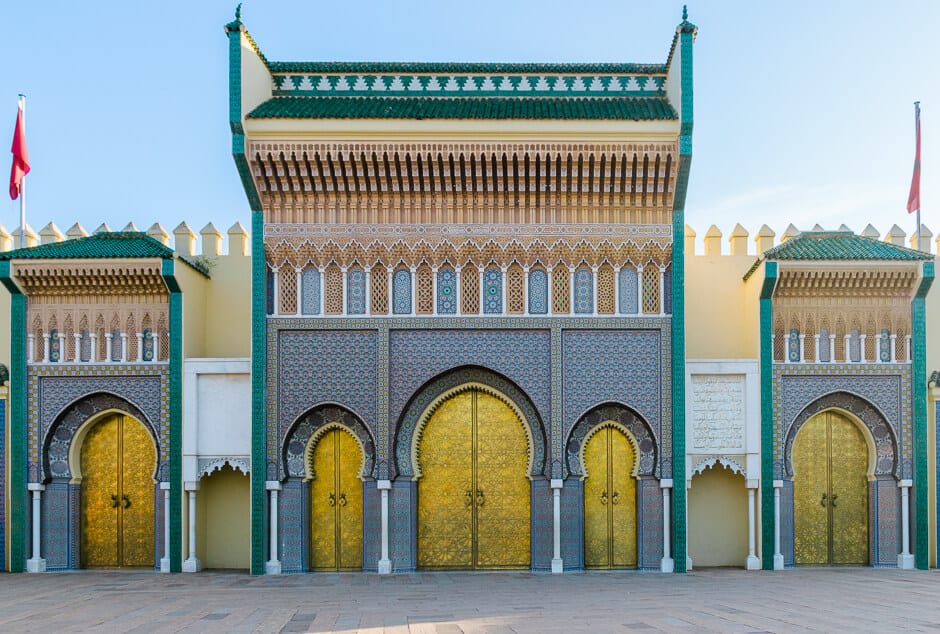
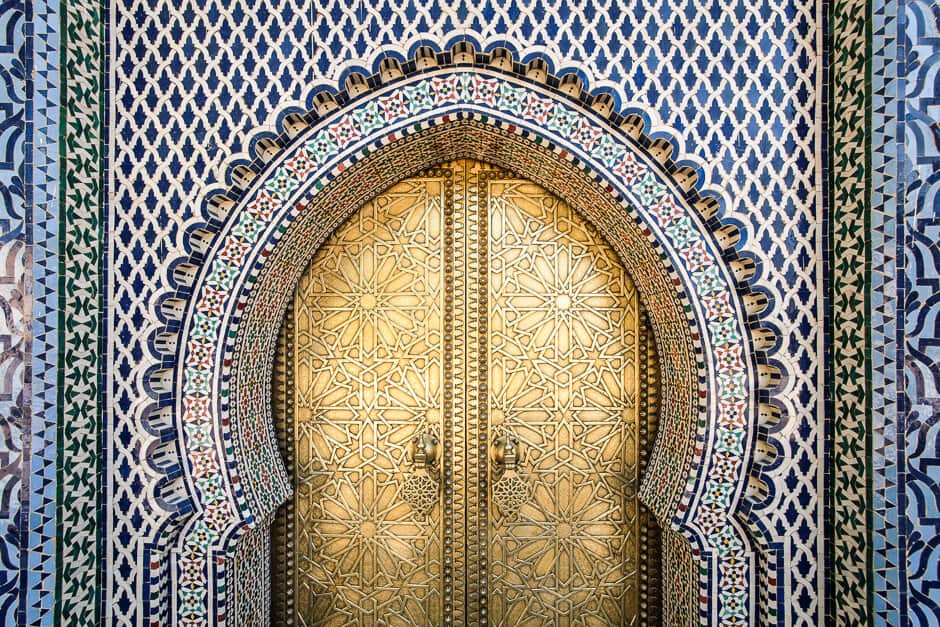
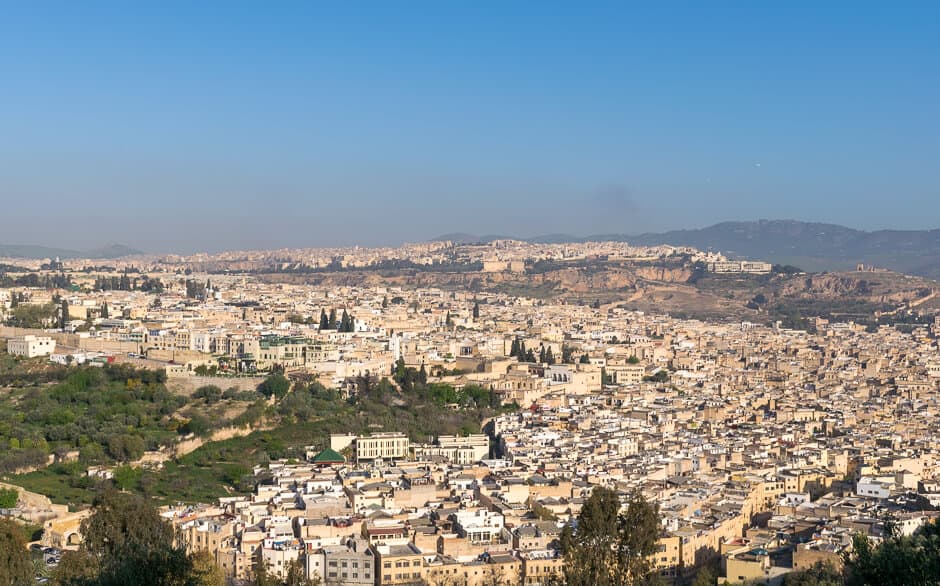
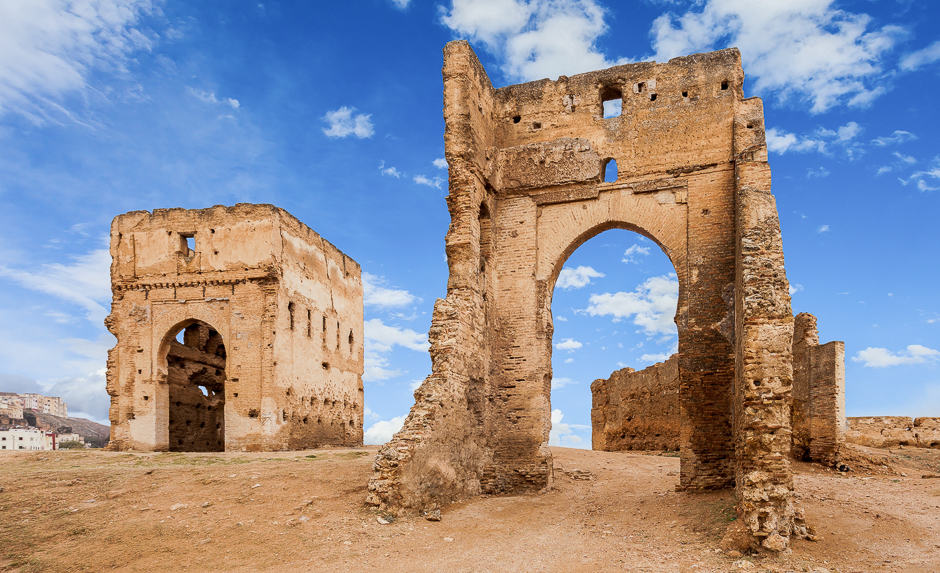
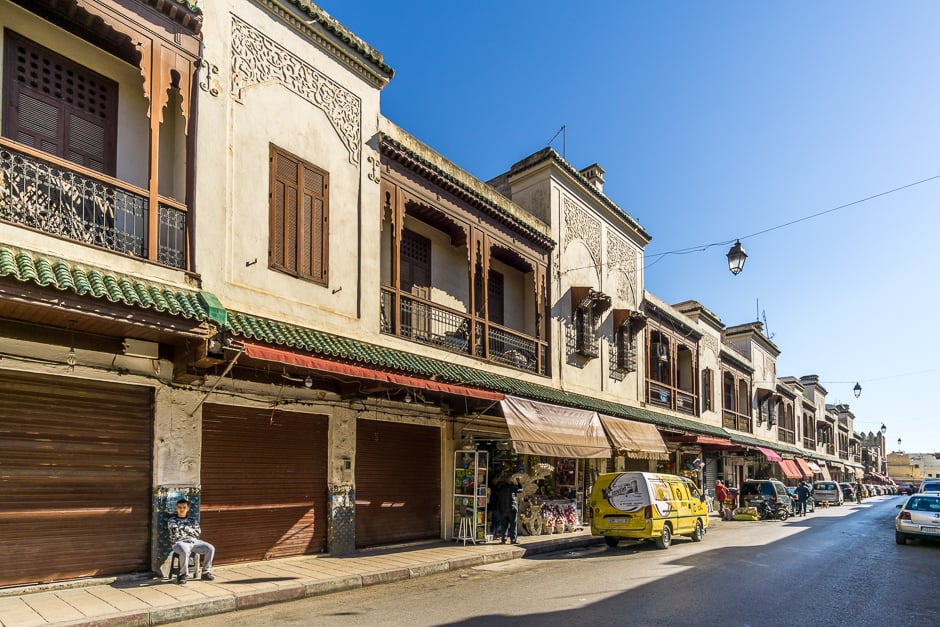
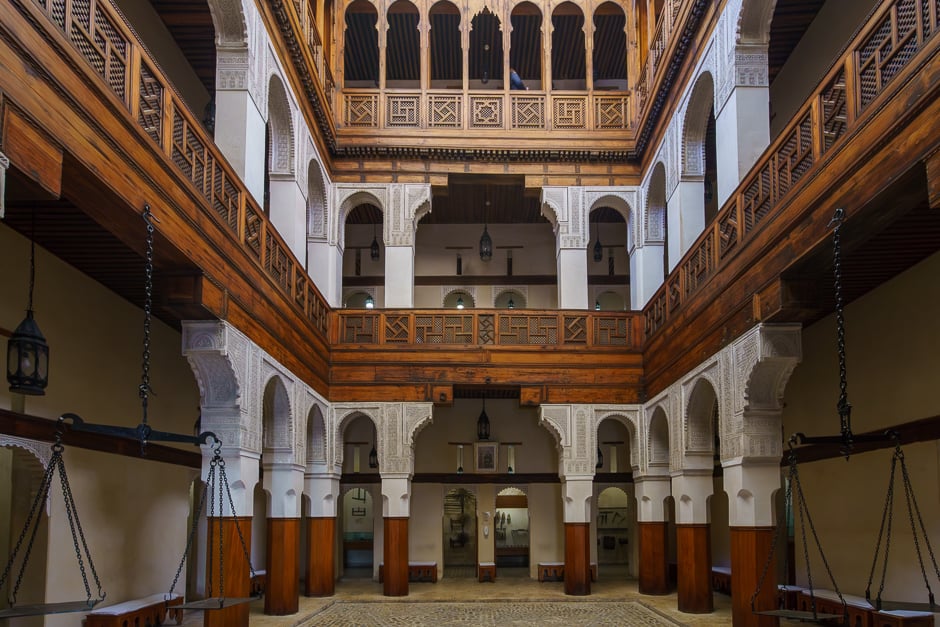
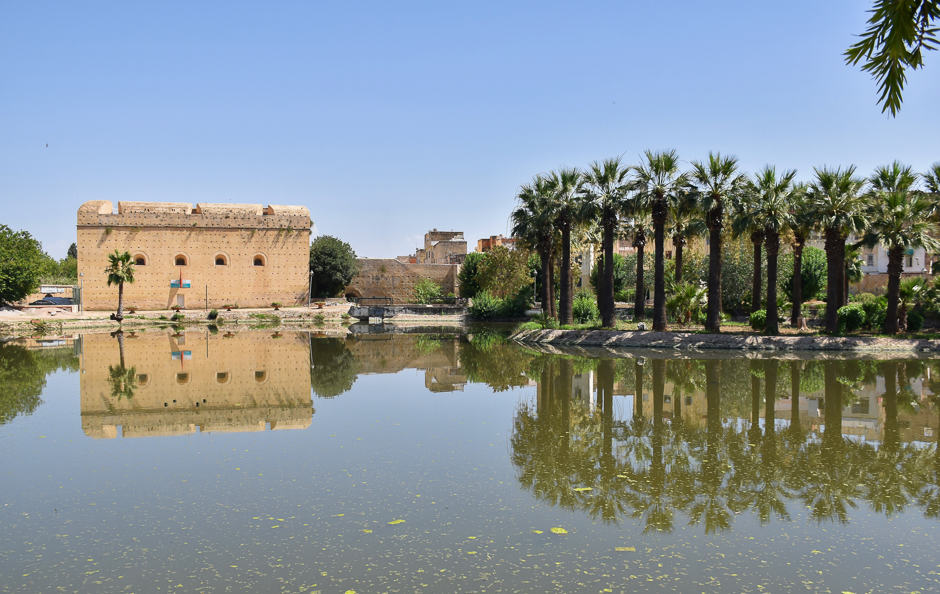
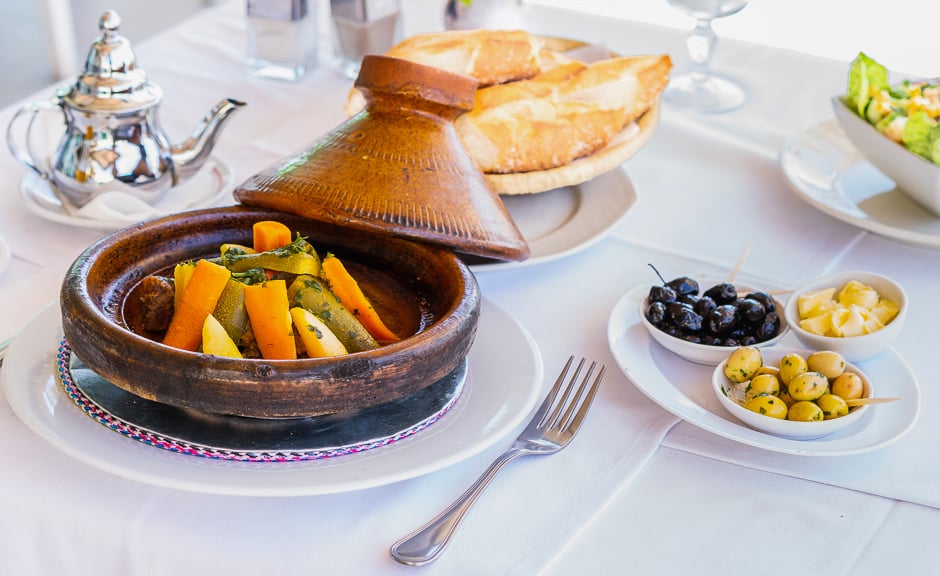
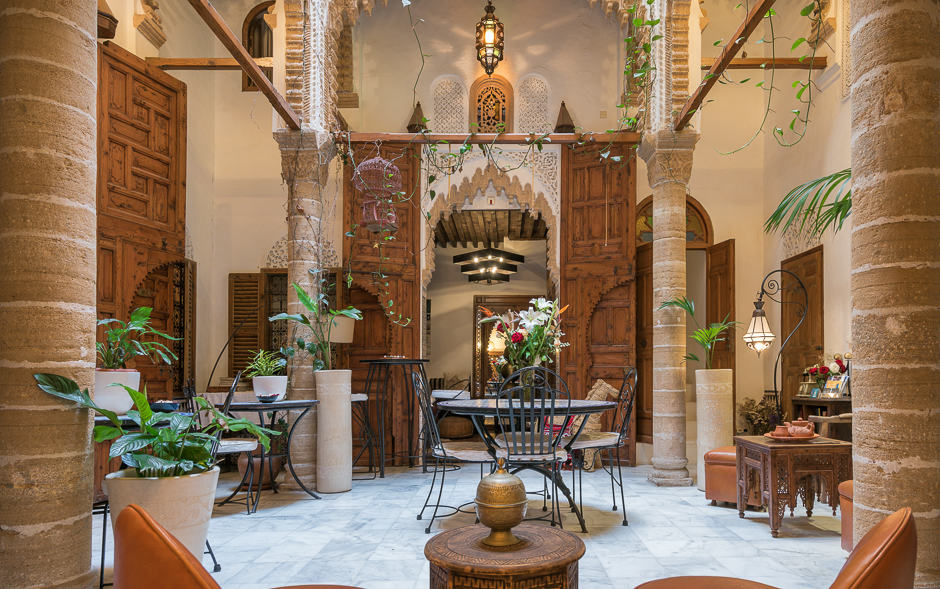
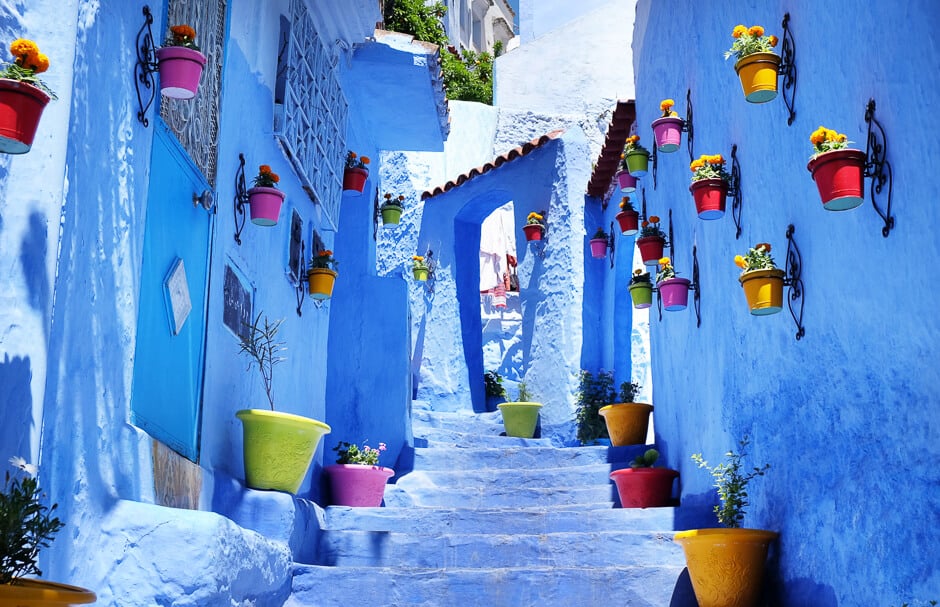
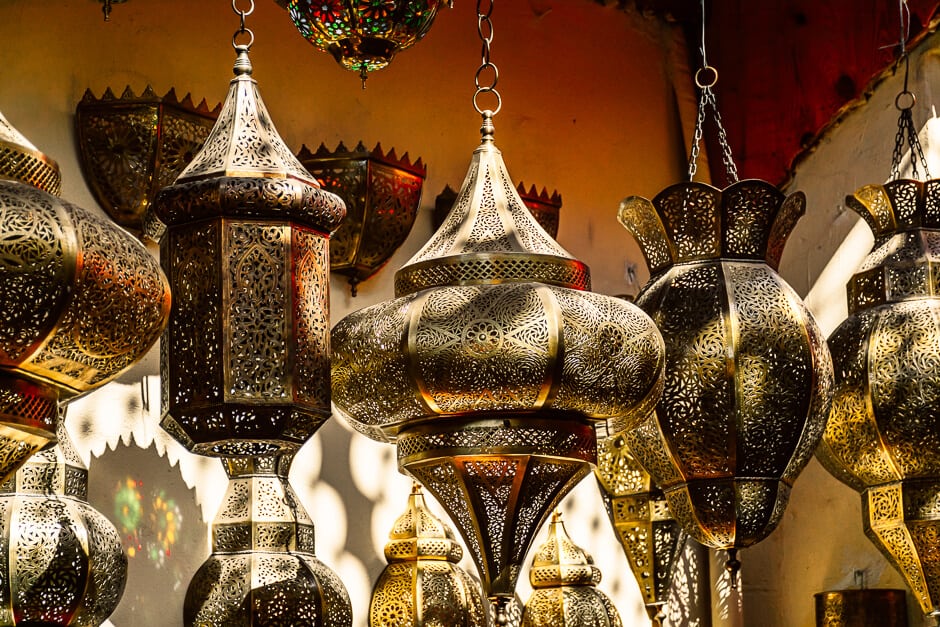
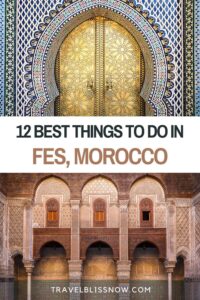
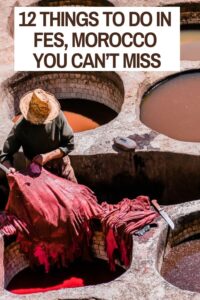
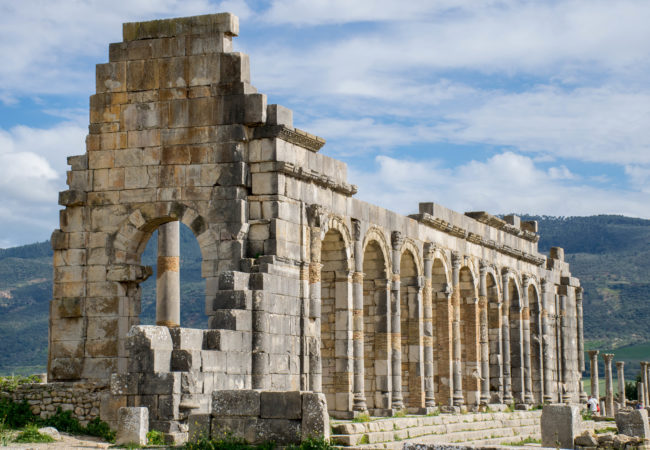
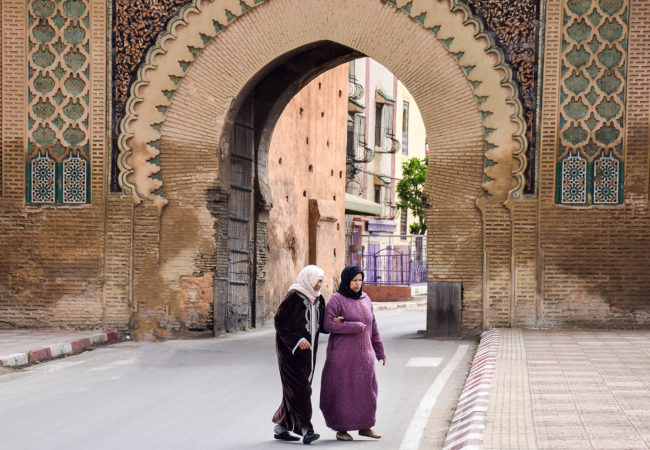
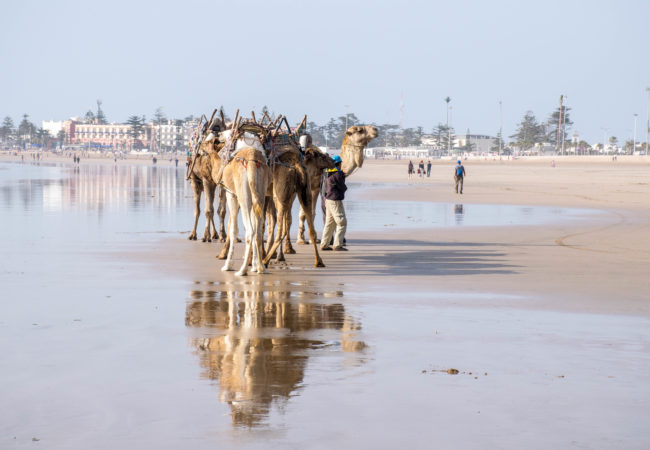
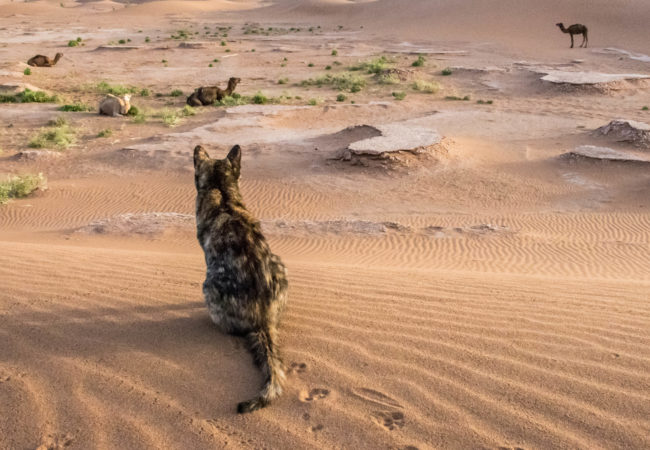

Great blog! This place is so beautiful! Hopefully one day I will be able to travel there!
Thanks Sarah! I hope you get the chance to go.